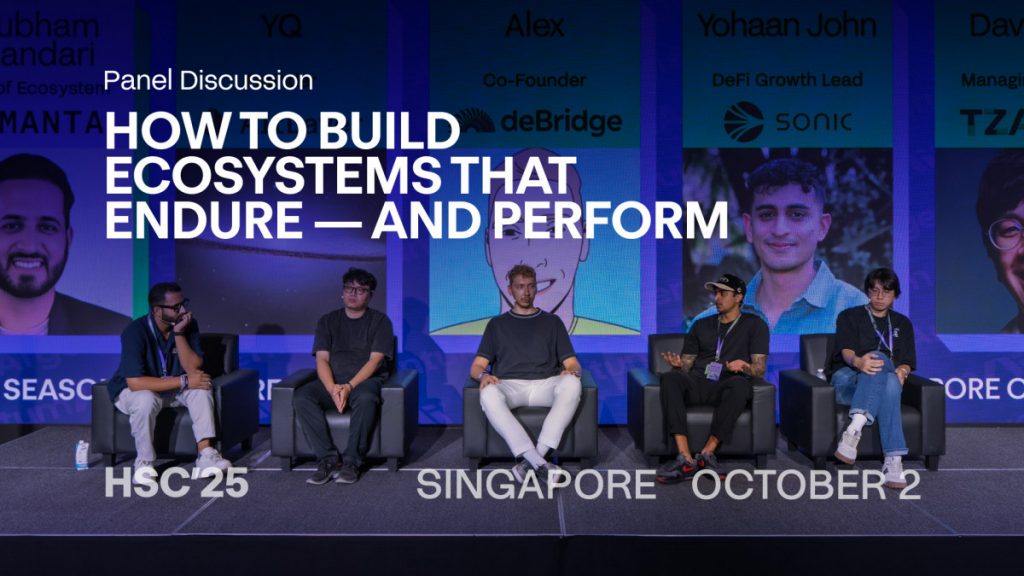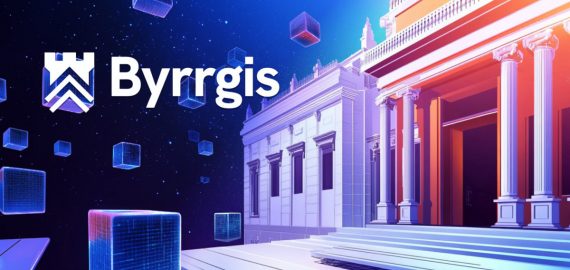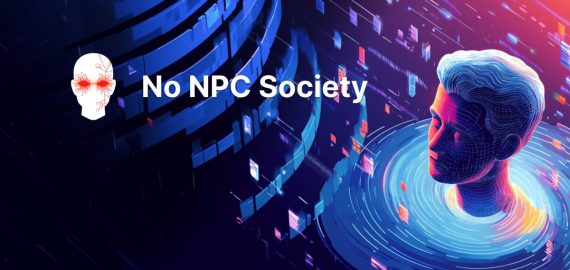How to Build Ecosystems That Endure — and Perform


In Brief
Web3 builders discussed separating hype-driven launches from networks that endure in a panel hosted by Manta Network’s Head of Ecosystem, Shubham Bhandari.

At a time when new blockchains emerge faster than ever and narratives shift by the quarter, the question of how to build ecosystems that last feels more urgent than ever. During a panel hosted by Manta Network’s Head of Ecosystem, Shubham Bhandari, leading builders from across Web3 — Altlayer, DeBridge, Sonic Labs, and Tezos (TZ APAC) — sat down to discuss what separates hype-driven launches from networks that endure.
From Narrative Hype to Real Utility
Opening the discussion, YQ, Founder of Altlayer, reflected on the evolution of the Layer 1 and Layer 2 landscape. “From 2021 to mid-2023, launching a chain was all about narrative,” he said. “Everyone wanted to spin up an L1 or L2 — not because there was demand, but because it looked good to investors.”
But the trend has shifted. “Now projects want to launch chains because they actually need them,” YQ explained. “Perpetual DEXs, AI trading platforms, payment protocols — they need super-low latency, sub-20ms performance, and full control over fees. It’s no longer just about valuation — it’s about product-market fit.”
Building Chains vs. Building Products
Moderator Shubham raised a question that hit the heart of the current dilemma: should founders launch their own chain or build on existing ones?
YQ’s answer was clear: “If you have an app that needs deep liquidity and low latency, maybe a chain makes sense. But if you’re building a normal DApp, stay where the liquidity already lives — on Ethereum, Solana, or Base.”
It’s a tension many founders face today: independence versus interoperability.
The Cross-Chain Future: Interoperability and Intents
Alex, Co-founder of DeBridge, has seen that tension play out across hundreds of integrations. As the company celebrates its third anniversary, he reflected on the rise of “intents” — a concept that has gone from buzzword to architectural pillar.
“In cross-chain, there are two big verticals,” Alex explained. “Custody — managing assets locked on one chain to issue them elsewhere — and trading — the ability to move or swap instantly across ecosystems.”
Custody, he noted, is hard to monetize and comes with enormous risk. “You’re responsible for billions in TVL, but you can’t use it to generate yield,” he said. “That’s why at DeBridge, we focused on cross-chain trading. Our model is zero-TVL — no custody, no sleepless nights — just instant, intent-based trading.”
He teased the company’s next leap: gasless cross-chain trading, where users sign an intent, solvers fulfill it instantly, and liquidity is aggregated across major DEXs. “We’re building the DeFi super app where users don’t think about chains — they just trade anything, anywhere, in one click.”
Sonic’s Reinvention: From Phantom to High-Speed DeFi
When Yohaan John, DeFi Growth Lead at Sonic Labs, spoke, the audience immediately tuned in. Sonic, formerly known as Phantom, has been through one of Web3’s boldest rebrands.
“It wasn’t just a marketing move,” he clarified. “Sonic is a completely new chain — new infra, new token, new validator design.” The shift, he said, was about redefining performance and developer incentives.
Sonic is fully EVM-compatible, capable of 400,000 TPS, and introduces fee monetization — returning 90% of gas fees directly to developers. “Builders can now earn from their applications,” Yohaan said. “That’s our moat.”
But the deeper point was philosophical. “The industry doesn’t need a hundred L2s,” he warned. “Block space isn’t scarce — most chains barely fill their capacity. What matters is having a clear purpose and value proposition. Don’t just build a chain for hype; build one because your product demands it.”
Tezos APAC: Scaling People, Not Just Protocols
Representing a more mature ecosystem, David Tng, Managing Director at TZ APAC, emphasized that ecosystem health depends on people, not throughput.
At Tezos, their focus is the Fortify Labs Accelerator — a people-centric initiative designed to help founders go from idea to product-market fit. “We’re not just handing out grants or tokens,” David said. “We work side by side with projects — often with a two-to-one mentor-to-startup ratio — helping them find users, revenue, and confidence.”
He noted a major shift among VCs: from investing to incubating. “Most founders in Asia are technically strong but lack exposure to enterprise pitching or global go-to-market. We help them build that muscle,” he added.
David’s larger point: the next stage of ecosystem growth won’t come from more chains — it’ll come from making Web3 easier for developers and users alike. Tezos is now working to onboard JavaScript developers via Etherlink and simplified toolsets. “We have to lower the entry barrier,” he said. “The next big app might not come from Solidity — it might come from someone who’s never written a smart contract before.”
Disclaimer
In line with the Trust Project guidelines, please note that the information provided on this page is not intended to be and should not be interpreted as legal, tax, investment, financial, or any other form of advice. It is important to only invest what you can afford to lose and to seek independent financial advice if you have any doubts. For further information, we suggest referring to the terms and conditions as well as the help and support pages provided by the issuer or advertiser. MetaversePost is committed to accurate, unbiased reporting, but market conditions are subject to change without notice.
About The Author
Victoria is a writer on a variety of technology topics including Web3.0, AI and cryptocurrencies. Her extensive experience allows her to write insightful articles for the wider audience.
More articles

Victoria is a writer on a variety of technology topics including Web3.0, AI and cryptocurrencies. Her extensive experience allows her to write insightful articles for the wider audience.

















































